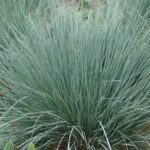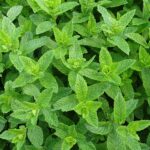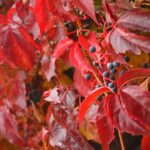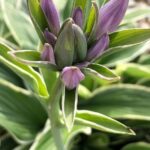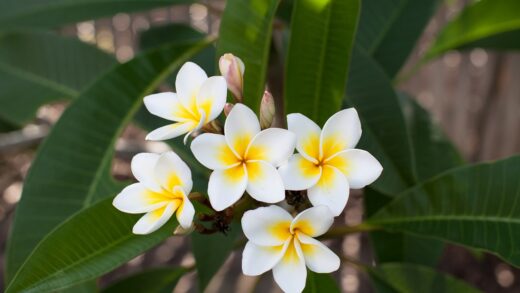Providing the appropriate nutrition is a cornerstone of successfully cultivating a healthy and vigorous wild service tree. While this species is adapted to thrive in its native woodland environment without human intervention, in a garden or managed landscape setting, understanding its nutrient requirements allows us to ensure it reaches its full potential. The key to proper fertilization is to support the tree’s natural processes rather than forcing unnatural growth. An excess of nutrients, particularly nitrogen, can be just as harmful as a deficiency. This article delves into the specific nutritional needs of the wild service tree, exploring the crucial role of soil health, the balance of essential macro and micronutrients, the benefits of organic versus synthetic approaches, and how to identify and address nutrient imbalances.
Understanding the soil’s role in nutrition
The foundation of all plant nutrition is the soil, and for the wild service tree, a healthy, living soil is paramount. In its natural woodland habitat, the tree benefits from a continuous cycle of nutrient renewal. Fallen leaves, twigs, and other organic matter decompose on the forest floor, creating a rich layer of humus that is teeming with microbial life. This ecosystem of bacteria, fungi, and other organisms breaks down organic material, making essential nutrients available to the tree’s roots in a slow, steady, and balanced manner. Replicating this process in a cultivated setting is the most effective way to meet the tree’s nutritional needs.
The physical and chemical properties of the soil directly impact nutrient availability. The wild service tree prefers a well-drained, loamy soil with a pH that is neutral to slightly alkaline. Soil pH is a critical factor because it affects the solubility of nutrients; even if nutrients are present in the soil, they may be ‘locked up’ and unavailable to the tree if the pH is too acidic or too alkaline. For example, in highly acidic soils, essential nutrients like phosphorus and molybdenum become less available, while in highly alkaline soils, iron and manganese can become inaccessible. Conducting a soil test before planting and periodically thereafter is an invaluable step in understanding your soil’s baseline fertility and pH.
The role of mycorrhizal fungi is another crucial aspect of the soil’s contribution to tree nutrition. These beneficial fungi form a symbiotic relationship with the roots of the wild service tree, effectively extending the root system and dramatically increasing its ability to absorb water and nutrients, especially phosphorus. A healthy soil food web supports a strong mycorrhizal network. Practices that harm this network, such as the overuse of chemical fertilizers and fungicides or excessive soil tillage, should be avoided. Instead, fostering this natural partnership through the addition of organic matter is a key strategy for ensuring the tree is well-nourished.
Therefore, the primary goal of any fertilization program for a wild service tree should be to feed the soil, not just the plant. By regularly incorporating organic matter such as compost, leaf mould, or well-rotted manure into the soil surface and maintaining a permanent organic mulch layer, you are providing the resources needed for the soil ecosystem to thrive. This approach creates a self-sustaining system where nutrients are continuously cycled and made available to the tree as needed, resulting in balanced growth and a resilient, healthy specimen that is less susceptible to pests and diseases.
More articles on this topic
Macronutrient and micronutrient needs
Like all plants, the wild service tree requires a range of nutrients for healthy growth, which are typically divided into two categories: macronutrients and micronutrients. Macronutrients are needed in larger quantities and include nitrogen (N), phosphorus (P), and potassium (K), along with calcium (Ca), magnesium (Mg), and sulfur (S). Nitrogen is vital for leafy growth and overall vigor. Phosphorus is essential for root development, energy transfer, and flower and fruit production. Potassium plays a key role in regulating water movement, enzyme activation, and overall plant hardiness, including disease resistance and drought tolerance. A balanced supply of these three primary macronutrients is crucial, particularly for young, developing trees.
While needed in much smaller quantities, micronutrients are just as essential for the tree’s health, and a deficiency in any one of them can cause significant problems. These include iron (Fe), manganese (Mn), zinc (Zn), copper (Cu), boron (B), and molybdenum (Mo). Iron, for example, is critical for the synthesis of chlorophyll, and a deficiency often results in the yellowing of leaves between the veins (interveinal chlorosis). Boron is important for cell wall formation and fruit development. In soils with a high pH, which the wild service tree generally prefers, the availability of certain micronutrients like iron and manganese can be reduced, which is an important consideration.
For the wild service tree, a balanced approach to nutrition is more important than high levels of any single nutrient. This species is not a ‘heavy feeder’ and is adapted to the moderate fertility of a woodland soil. Over-fertilization, especially with high-nitrogen fertilizers, can be detrimental. It can stimulate excessive, weak, sappy growth that is more attractive to pests like aphids and more susceptible to diseases and frost damage. This rapid growth also comes at the expense of a strong root system and sturdy wood development, potentially compromising the tree’s long-term structural integrity.
The ideal nutrient supply for a wild service tree is one that is delivered slowly and steadily over the course of the growing season. This is where organic fertilizers and amendments excel, as they release their nutrients gradually as they are broken down by soil microbes. This slow-release action provides a constant, balanced diet for the tree that mimics the natural nutrient cycling of a forest floor. It ensures that the tree gets what it needs, when it needs it, without the sudden flushes of growth associated with fast-acting synthetic fertilizers.
More articles on this topic
Organic fertilization methods
Organic fertilization methods are perfectly suited to the needs of the wild service tree as they focus on building long-term soil health and providing a slow, balanced release of nutrients. The most fundamental organic practice is the application of compost. High-quality compost is a complete soil conditioner, providing a wide range of macro and micronutrients, improving soil structure, enhancing water retention, and feeding the beneficial microorganisms that are essential for a healthy root environment. An annual top-dressing of compost, spread over the root zone in a layer a few centimeters thick, is often all the fertilization an established wild service tree needs.
Another excellent organic amendment is well-rotted manure. Like compost, it supplies a balanced profile of nutrients and a large amount of organic matter to improve the soil. It is crucial that the manure is well-rotted, as fresh manure is too high in ammonia and can burn the tree’s roots. Other organic materials such as leaf mould are particularly beneficial as they closely replicate the natural litter of a forest floor. Applying these materials as a mulch around the base of the tree is a highly effective two-in-one method, as they both suppress weeds and slowly break down to feed the soil and the tree.
For situations where a specific nutrient boost is required, various organic-approved fertilizers can be used. For a balanced feed, products like blood, fish, and bone meal provide a good source of nitrogen, phosphorus, and potassium. If a soil test indicates a phosphorus deficiency, bone meal is an excellent slow-release source. For potassium, rock potash or wood ash (used sparingly and only on non-alkaline soils) can be effective. Green manures, which are crops grown specifically to be cut down and incorporated into the soil, are another fantastic way to add organic matter and nutrients, though this is more practical in a larger orchard or woodland planting setting.
Liquid organic feeds can also be used, particularly for young trees in containers or to give a newly planted tree a gentle boost. Feeds made from comfrey or seaweed are excellent choices. Seaweed extract is particularly valuable as it contains a wide array of trace elements (micronutrients) and natural plant growth hormones that can help to stimulate root development and improve the tree’s overall resilience to stress. These liquid feeds are absorbed quickly by the plant and can be a useful supplement to a long-term strategy of soil building with compost and mulch.
Synthetic fertilizers and application timing
While organic methods are generally preferred for their soil-building benefits, there may be specific situations where synthetic fertilizers are considered for a wild service tree, such as correcting a severe, professionally diagnosed nutrient deficiency. If using synthetic fertilizers, it is imperative to choose the right formulation and apply it correctly to avoid harming the tree or the surrounding environment. A balanced, slow-release granular fertilizer is the best option. Look for a formulation where the nitrogen (N), phosphorus (P), and potassium (K) numbers are relatively balanced, such as a 10-10-10, or one that is specifically designed for trees and shrubs.
The timing of fertilizer application is critical to ensure the nutrients are used effectively by the tree and are not wasted or leached into the groundwater. The best time to fertilize a wild service tree is in the early spring, just as new growth is beginning. This is when the tree’s demand for nutrients is highest as it produces new leaves, shoots, and flowers. Applying fertilizer at this time ensures that the nutrients are readily available when the tree needs them most. A second, lighter application could be made in early summer, but fertilizing should be avoided after mid-summer.
Late-season fertilization, especially with high-nitrogen products, is strongly discouraged. It can stimulate a flush of new growth late in the autumn that will not have sufficient time to harden off before the first frosts. This tender new growth is highly susceptible to winter damage, which can stress the tree and create entry points for diseases. The tree should be preparing for dormancy in the late summer and autumn, not putting on new growth, so it is important to align any feeding schedule with its natural growth cycle.
When applying granular synthetic fertilizer, it is important to do so correctly. Never concentrate the fertilizer at the base of the trunk. Instead, spread it evenly over the entire root zone, which extends from near the trunk out to the tree’s drip line (the edge of its canopy) and often beyond. The fertilizer should be lightly raked into the soil surface and then watered in thoroughly. This helps to move the nutrients down into the root zone where they can be absorbed and reduces the risk of the fertilizer burning the surface roots or being washed away by rain. Always follow the application rates recommended on the product label, as over-application can be highly damaging.
Diagnosing and correcting nutrient deficiencies
Diagnosing nutrient deficiencies in a wild service tree requires careful observation, as the symptoms can sometimes be subtle or mimic those of other problems like disease or water stress. The most common visual cue is a change in leaf colour. A general yellowing of the entire tree, especially older leaves, can indicate a nitrogen deficiency. In contrast, a phosphorus deficiency might manifest as stunted growth and leaves that take on a purplish hue. A potassium deficiency often appears as yellowing or scorching along the edges of the leaves, particularly on older foliage.
Micronutrient deficiencies also have characteristic symptoms, often related to the soil’s pH. Iron chlorosis is a common issue in alkaline soils and presents as a distinct yellowing of the newest leaves while the veins remain green. This interveinal chlorosis occurs because iron is immobile within the plant, so the deficiency shows up in new growth first. A manganese deficiency can look very similar. A proper diagnosis often requires a soil test to confirm the pH and nutrient levels, and in some cases, a foliar analysis (testing the leaves themselves) may be necessary for a definitive answer.
Once a deficiency is correctly identified, a targeted approach can be taken to correct it. For a general lack of vigor and pale leaves indicating a nitrogen shortage, a top-dressing of compost or an application of a balanced organic fertilizer in the spring is usually sufficient. For a phosphorus or potassium deficiency confirmed by a soil test, specific organic amendments like bone meal (for P) or rock potash (for K) can be applied. It is important to remember that these organic sources release their nutrients slowly, so improvements may not be immediately visible but will contribute to the tree’s long-term health.
For micronutrient deficiencies like iron chlorosis, the solution often involves addressing the root cause, which is typically a high soil pH making the nutrient unavailable. While adding iron to the soil (in the form of iron sulfate) can help, it may be a short-term fix if the pH remains high. A more effective long-term strategy is to try and gradually lower the soil pH by incorporating acidic organic matter like pine bark fines or elemental sulfur. For a more immediate, though temporary, solution, a foliar feed containing chelated iron can be sprayed directly onto the leaves, allowing the tree to absorb the nutrient directly through its foliage.








